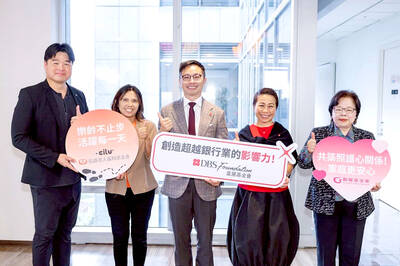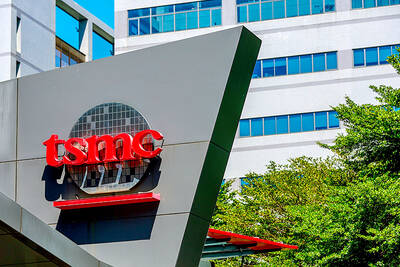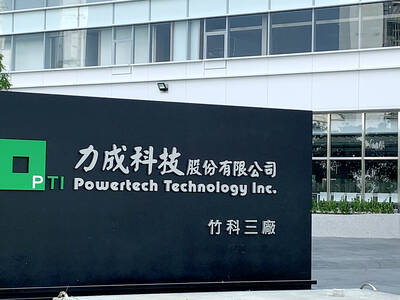The world’s biggest developer of offshore wind farms is weighing nearly US$13 billion of projects in Taiwan, saying that the COVID-19 pandemic has not shifted its optimism about the region.
The potential investments by Orsted A/S would include the Greater Changhua 3 wind farm, which it plans to bid for in the next round of auctions if the conditions are “manageable,” Orsted president for Asia-Pacific Matthias Bausenwein said in a telephone interview.
The auction is scheduled for the end of this year, and the company would wait to see the framework and rules for the contest before deciding whether to participate.
Orsted has already built and commissioned Formosa 1 (海洋風電), the first commercial-scale offshore wind farm in Taiwan, with joint venture partners. It is also building the Greater Changhua 1 and 2a wind farms, which are estimated to be completed next year or in 2022. Another plan is to build the Greater Changhua 2b and 4 wind farms in 2025.
Total capital expenditure for all four projects, with a capacity of 2.4 gigawatts, is estimated at up to NT$380 billion (US$12.5 billion).
“At the moment, we don’t see the coronavirus changing any of our plan,” Bausenwein said. “Business is as usual. We aim to be a long-term player in Taiwan.”
Orsted on Wednesday said that it is sticking to its guidance for this year, despite the coronavirus, and that its liquidity position is strong.
Funding for the investment would be from Orsted’s own capital and financing from Taiwan’s local financial institutions, as well as bond market, backed by an Orsted parent company guarantee.
The company has issued its first batch of NT$12 billion green bonds in Taiwan, and it might go ahead with another.
In addition to Taiwan, Japan is the next big step for Orsted in the Asia-Pacific region. The company has formed a joint venture with Tokyo Electric Power Co to prepare a bid for an auction at the end of this year.
Taiwan and Japan are both mountainous and rely heavily on fossil fuel imports, with highly populated coastal areas that make offshore wind an ideal renewable energy source.
Taiwan aims to be a leading developer of green energy. It has targeted 5.7 gigawatts of offshore wind power by 2025 and another 10 gigawatts by 2035.
BloombergNEF expects Japan’s offshore wind capacity to exceed 9 gigawatts by 2030.
“Taiwan is a lively market with diversity of players, both local and global ones,” Bausenwein said. “We are well-positioned for any future auction with our commitment and what we have delivered.”

The DBS Foundation yesterday announced the launch of two flagship programs, “Silver Motion” and “Happier Caregiver, Healthier Seniors,” in partnership with CCILU Ltd, Hondao Senior Citizens’ Welfare Foundation and the Garden of Hope Foundation to help Taiwan face the challenges of a rapidly aging population. The foundation said it would invest S$4.91 million (US$3.8 million) over three years to foster inclusion and resilience in an aging society. “Aging may bring challenges, but it also brings opportunities. With many Asian markets rapidly becoming super-aged, the DBS Foundation is working with a regional ecosystem of like-minded partners across the private, public and people sectors

Taiwan Semiconductor Manufacturing Co (TSMC, 台積電) has secured three construction permits for its plan to build a state-of-the-art A14 wafer fab in Taichung, and is likely to start construction soon, the Central Taiwan Science Park Bureau said yesterday. Speaking with CNA, Wang Chun-chieh (王俊傑), deputy director general of the science park bureau, said the world’s largest contract chipmaker has received three construction permits — one to build a fab to roll out sophisticated chips, another to build a central utility plant to provide water and electricity for the facility and the other to build three office buildings. With the three permits, TSMC

BREAKTHROUGH TECH: Powertech expects its fan-out PLP system to become mainstream, saying it can offer three-times greater production throughput Chip packaging service provider Powertech Technology Inc (力成科技) plans to more than double its capital expenditures next year to more than NT$40 billion (US$1.31 billion) as demand for its new panel-level packaging (PLP) technology, primarily used in chips for artificial intelligence (AI) applications, has greatly exceeded what it can supply. A significant portion of the budget, about US$1 billion, would be earmarked for fan-out PLP technology, Powertech told investors yesterday. Its heavy investment in fan-out PLP technology over the past 10 years is expected to bear fruit in 2027 after the technology enters volume production, it said, adding that the tech would

YEAR-END BOOST: The holiday shopping season in the US and Europe, combined with rising demand for AI applications, is expected to drive exports to a new high, the NDC said Taiwan’s business climate monitor improved last month, transitioning from steady growth for the first time in five months, as robust global demand for artificial intelligence (AI) products and new iPhone shipments boosted exports and corporate sales, the National Development Council (NDC) said yesterday. The council uses a five-color system to measure the nation’s economic state, with “green” indicating steady growth, “red” suggesting a boom and “blue” reflecting a recession. “Yellow-red” and “yellow-blue” suggest a transition to a stronger or weaker condition. The total score of the monitor’s composite index rose to 35 points from a revised 31 in August, ending a four-month